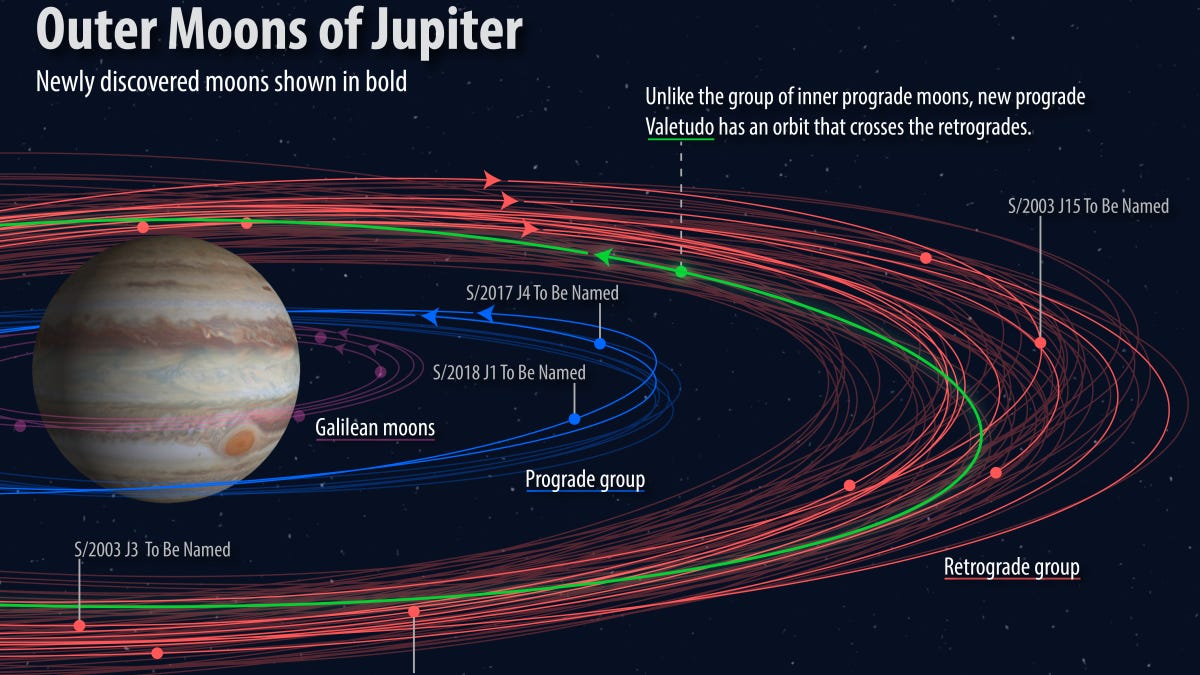Jupiter's five new moons get names, but no Moony McMoonface
Surprisingly, asking Twitter to name newly discovered moons does not end in disaster.

The five moons were discovered in July 2018.
When it comes to moons, Jupiter is pretty selfish. Unlike Earth, which only has one natural rocky satellite, the gas giant has 79. Twelve of those were first discovered in July 2018, including one "oddball," and shortly after, The Carnegie Institution for Science put out the call to Twitter to name them with some super strict rules. On Aug. 24, the winners were announced and, perhaps sadly for some, there is no Moony McMoonface.
The competition to name the moons was launched last year after the moons were discovered. Soliciting names from Twitter seems fraught with danger but the International Astronomical Union (IAU), the organization that hands out cosmic monikers, does have a few rules when it comes to naming moons.
"Jovian naming conventions require its many moons to be named after characters from Greek and Roman mythology who were either descendants or consorts of Zeus, or Jupiter," said Carnegie's Scott Sheppard, in a release.
Without a Moony McMoonface in those mythologies, that option was out. After two months of suggestions and a review by the IAU, the names have been announced and all five are daughters or granddaughters of Zeus, the Greek god of the sky -- a prerequisite for naming. The newly announced moons are:
- Pandia (was S/2017 J4)
- Ersa (was S/2018 J1)
- Eirene (was S/2003 J5)
- Philophrosyne (was S/2003 J15)
- Eupheme (was S/2003 J3)
"I was blown away by the enthusiastic response for this contest," said Sheppard. "I hope the thought of these moons let everyone ponder the wonder and amazement that is our universe."
The Galilean moons -- Io , Ganymede, Callisto and Europa -- are some of the biggest objects in our solar system and the topic of intense interest for stargazers and researchers alike. One of those moons, Europa, is full of table salt and will be the subject of a new NASA mission in the mid-2020s. Giant waves of extraterrestrial lava have been spotted on Io and Ganymede, the biggest moon in the solar system, has a saltwater ocean. Basically, Jupiter gets all the cool moons -- and now it gets five more.

